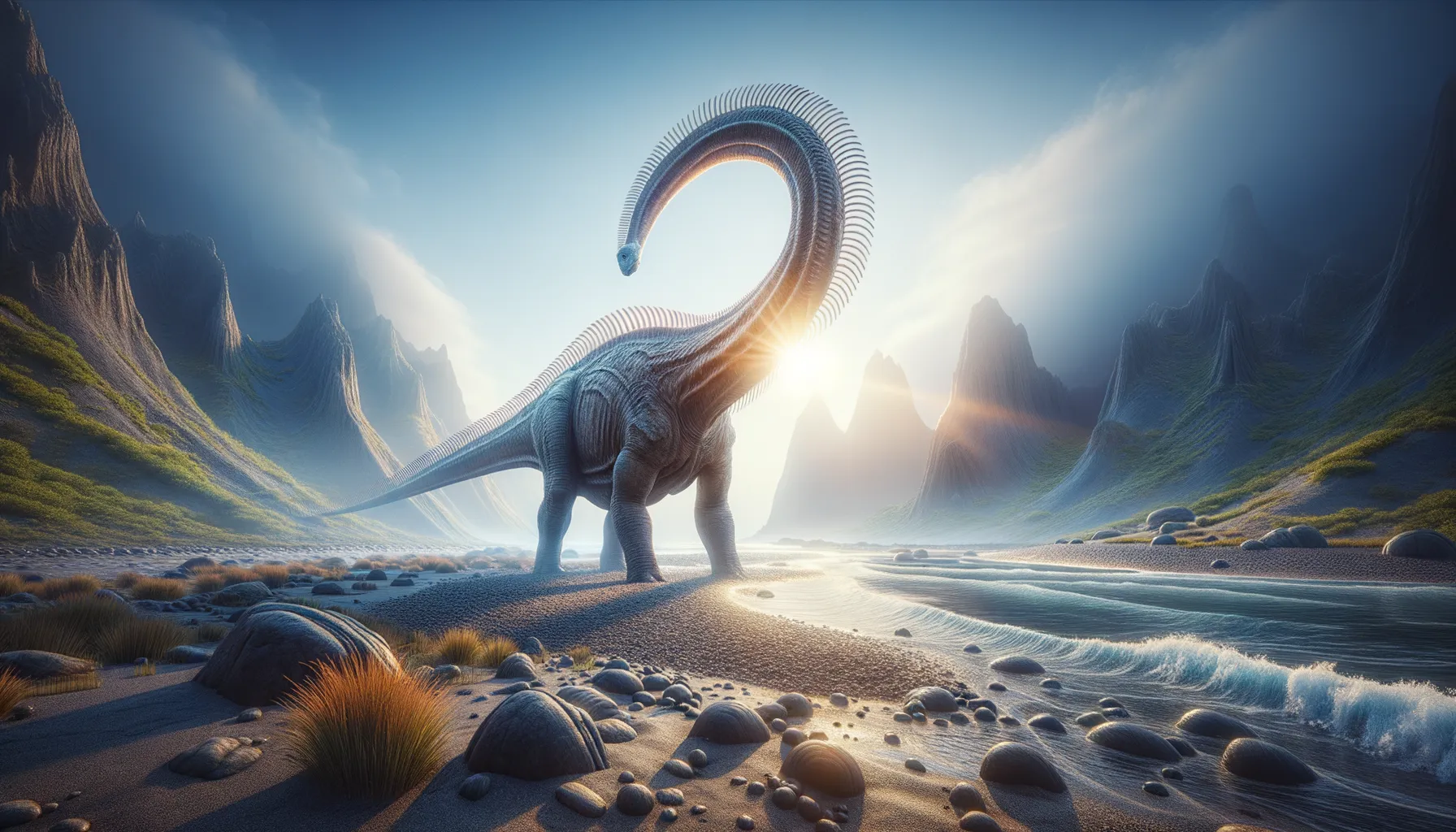
Ammosaurus
Sand lizard of the Jurassic age.
Period
Jurassic
Length
Measured approximately 4 meters long.
Height
Stood about 2 meters tall.
Weight
Weighed around 500 kg.
Ammosaurus was a small to medium-sized dinosaur known for its bipedal stance and long neck. Believed to have lived during the Early Jurassic period, it possessed features typical of both early sauropods and later more advanced types. Its name means 'sand lizard,' stemming from the sandstone formations where its fossils were discovered. Ammosaurus is significant for providing insights into the evolution of larger sauropods.
Diet
Ammosaurus was likely an herbivore, feeding on low-lying plants. It may have consumed ferns, cycads, and conifer leaves, which were abundant during its time.
Hunting
Being an herbivore, Ammosaurus did not hunt. Instead, it foraged for vegetation and utilized its long neck to reach plants low to the ground.
Environmental challenges
Ammosaurus faced changing climates and the need to migrate to find food sources. Predators posed a constant threat, requiring alertness and defensive strategies. Limited food availability during dry seasons might have caused population challenges.
Speed
Moderate, likely moved with slow, deliberate steps.
Lifespan
Estimated to live around 20 to 30 years.
First discovery
Discovered in 1891 in the United States.
Fun Facts
- Ammosaurus was a small to medium-sized dinosaur that lived during the early Jurassic period, around 190 million years ago.
- Its name means 'sand lizard,' named for the sandy riverbank environment where its fossils were first discovered.
- Ammosaurus was a herbivore, meaning it mainly fed on plants and leaves instead of meat.
- This dinosaur had a long neck and tail, which helped it reach higher plants and balance its body respectively.
- Ammosaurus walked on two legs but could also use all four for extra stability when feeding.
- The fossils of Ammosaurus were first found in the northeastern United States, particularly in Connecticut and Massachusetts.
- Despite being relatively small for a dinosaur, Ammosaurus could grow up to 4 meters (about 13 feet) in length.
Growth and Development
Ammosaurus likely grew rapidly during early years to decrease vulnerability to predators. Its skeletal structure suggests it developed a robust frame, allowing for efficient foraging. As it matured, size and strength increased, aiding in survival.
Habitat
Ammosaurus lived in a diverse environment with lush forests and open plains. It thrived near riverbanks where vegetation was plentiful. Seasonal changes in the habitat required adaptability in survival strategies.
Interaction with other species
Ammosaurus coexisted with various dinosaurs and smaller reptiles. Its primary interaction involved competing for food resources. The presence of both herbivores and carnivores might have influenced its behavioral adaptations.
Natural lifespan
Ammosaurus naturally lived to about 20-30 years.
Reproduction
Ammosaurus likely laid eggs, with clutch sizes adapted to environmental conditions. Parental care post-hatching was minimal, common among many dinosaur species.
Social behaviour
Ammosaurus might have traveled in small groups or herds for protection. Social structures could have been based on age and size, providing safety in numbers from predators.
Fossil locations
Fossil remains of Ammosaurus have been primarily found in Connecticut, USA. These fossils were discovered in sandstone deposits typical of the Early Jurassic period, indicating a relatively arid environment. Additional remains have been identified in Massachusetts, suggesting broader distribution.
